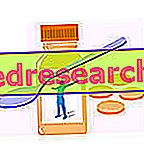Related articles: Cervical whiplash
Definition
Whiplash is a traumatic event that affects the cervical spine, ie the upper part of the spine. It occurs as a result of a sudden movement of the head, with the transmission of sudden forces of varying intensity in one or more directions: the neck bends back sharply (hyperextension of the neck), then forward (compressive hyper-flexion), for a acceleration-deceleration reaction. Such a traumatic solicitation is often a consequence of car accidents (especially rear-end collisions), sports injuries, physical violence (eg punches) or accidental falls.
Most common symptoms and signs *
- Tinnitus
- Tinnitus
- Neck pain
- Hand and wrist pain
- Pain associated with chewing
- Tingling in the right arm
- Tingling in the Left Arm
- Tingling in the right hand
- Tingling in the head
- Tingling in the hands
- Backache
- Headache
- Nausea
- Paresthesia
- Joint stiffness
- Stiffness in the muscles of the back and neck
- Lhermitte sign
- Dizziness
- Blurred vision
Further indications
The cervical whiplash manifests itself with symptoms of varying severity, immediate and late (appear after a few hours from the trauma). The lesion, in fact, even if slight, can lead to very painful and protracted consequences.
Immediately after the trauma, dizziness, tinnitus and paresthesia appear. Subsequently, whiplash causes pain in the neck and upper back. Cervicalgia can be associated with contracture, stiffness and marked limitation of neck movements.
In severe cases, neurological signs (eg, absence of reflexes and weakness), dislocations, disc herniations or severe vertebral fractures may occur.
This kind of trauma requires an immediate medical examination to assess the severity of the injuries. The investigations may also include X-ray and CT scans.
If after the cervical whiplash the pain is very intense and no movement is possible, it is necessary to wear the orthopedic collar for about 15 days. Furthermore, to combat neck pain, the doctor can indicate a therapy based on painkillers.
After 2 weeks from the trauma, a rehabilitative physiotherapy treatment can be indicated to ease muscle tension, reduce pain and speed up recovery times.



